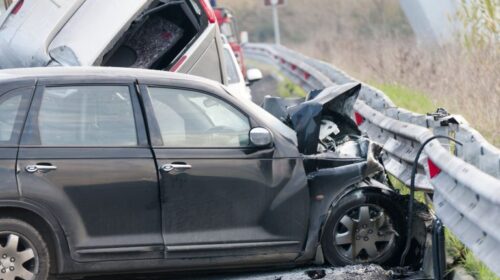Ohio, a state with bustling cities like Cincinnati, has its own set of laws when it comes to car accident liability. Known for its vibrant history and significant cultural presence, Cincinnati is one of Ohio’s busiest areas, with numerous cars on the roads daily. When accidents occur in Cincinnati or anywhere else in Ohio, understanding the state’s “fault” system becomes essential for pursuing claims effectively. Speak with a Cincinnati car crash attorney to better understand the at-fault system of Ohio.
In this article, we’ll explore what it means for Ohio to be a fault state and how this affects your car accident claim.
What is a Fault State?
In the United States, states generally operate under either a “fault” or “no-fault” system when it comes to auto accidents. In a fault state like Ohio, the driver determined to be at fault for the accident is financially responsible for the damages caused. This means that if you’re involved in a car accident and you’re not at fault, you have the right to pursue compensation from the responsible party’s insurance.
Ohio’s fault-based system affects how claims are filed and who bears financial responsibility. This system requires all drivers to carry a minimum level of insurance coverage to cover potential damages. Under Ohio law, drivers must carry insurance for bodily injury and property damage, providing a level of protection in case of accidents.
How Fault is Determined in Ohio Car Accidents
After an accident, determining who was at fault is one of the first steps in filing a claim. In Ohio, fault is established based on evidence gathered from the accident scene, such as police reports, witness statements, and vehicle damage assessments. Insurance adjusters will review the facts to identify the at-fault party.
Ohio operates under a “comparative negligence” rule, meaning that if you are partially at fault, your compensation may be reduced. For example, if you’re deemed to be 20% at fault for an accident, your compensation would be reduced by that percentage. However, Ohio follows the “50% bar rule,” meaning if you are found to be more than 50% responsible, you cannot collect compensation from the other party.
Filing a Car Accident Claim in Ohio
In a fault state like Ohio, there are generally three options for recovering compensation after a car accident:
- File a Claim with the At-Fault Driver’s Insurance: This is the most common route if you’re not responsible for the accident. The at-fault driver’s insurance should cover your medical expenses, property damage, and other associated costs.
- File a Claim with Your Own Insurance: If you carry collision or medical payment coverage, you can file with your own insurance to recover compensation, which may speed up the process. Your insurer may then seek reimbursement from the at-fault driver’s insurer through a process called subrogation.
- File a Personal Injury Lawsuit: If the at-fault driver’s insurance company disputes your claim or refuses a fair settlement, you may choose to file a lawsuit. This may be necessary if your damages exceed the at-fault driver’s policy limits or if your claim is denied.
Why Having Legal Representation is Important
Navigating Ohio’s fault-based insurance system can be complicated, especially if multiple parties are involved. Understanding how to negotiate with insurance companies and proving liability can be challenging without legal expertise. Working with experienced Cincinnati car crash attorneys can significantly improve your chances of securing fair compensation. Local attorneys understand Ohio’s legal framework and have the resources to gather and present evidence effectively, ensuring your claim is as strong as possible.
The Role of Cincinnati Car Crash Attorneys
Cincinnati car crash attorneys play a crucial role in supporting car accident victims throughout the claims process. They can help in various ways, such as:
- Gathering Evidence: Attorneys work with investigators, collect police reports, interview witnesses, and gather photos and videos from the accident scene.
- Handling Negotiations: Insurance companies often try to minimize payout amounts. An attorney can negotiate on your behalf to secure a fair settlement that covers all your damages.
- Representing You in Court: If the insurance company refuses to settle fairly, a car crash attorney can represent you in court, using legal strategies to prove liability and seek maximum compensation for your injuries.
Statute of Limitations for Car Accident Claims in Ohio
Ohio law imposes a two-year statute of limitations on car accident claims. This means you have two years from the accident date to file a lawsuit for personal injuries or property damage. Missing this deadline could result in losing the right to pursue compensation, so it’s essential to act quickly.
Conclusion
Living in a fault state like Ohio means that determining responsibility in a car accident can significantly affect the outcome of your claim. For residents of Cincinnati, understanding the fault system is essential to securing compensation after an accident. Working with Cincinnati car crash attorneys can make a difference in navigating complex insurance claims and achieving a fair resolution. By understanding Ohio’s legal landscape and seeking professional guidance, you can be better prepared to protect your rights and secure the compensation you deserve after a car accident.

